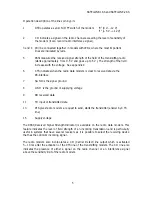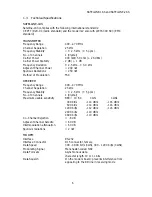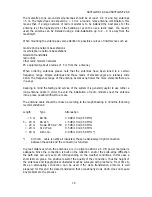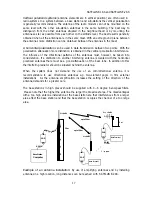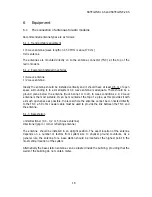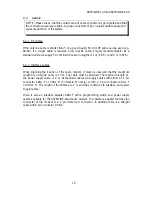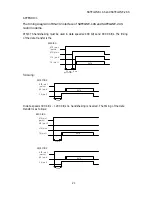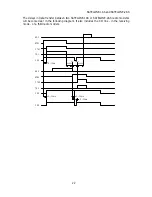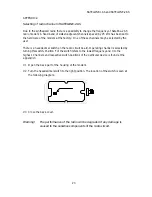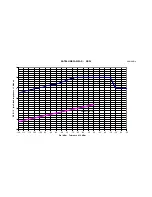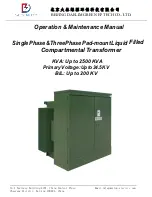
2.5
Reception
The radio modem is ready to receive data when the supply voltage is switched on and the
DTR line is in the "ON" state.
Equipment connected to the radio data modem receives information about the incoming
data by detecting the change in state of the RD line. In addition, the change in state of the
CD line also allows the equipment to detect the start of a transmission.
2.6
Delays during data transmission
Delays may occur when transmitting or receiving data using the radio data modem.
These delays are:
Wake-up time DTR OFF/ON
30 ms (1AS) / 400 ms (2AS)
RTS/CTS delay
8...10 ms
Rx/Tx turn round delay
2 x 40 DBP + 20...25 m
(40ms @4800 bit/s)
(50ms @2400 bit/s)
Rx ON connecting time
10 ms
Synchronization sequence
10 DBP (DBP=Data Bit Period)
(e.g. 2ms @ 4800 bit/s)
3
Multi Modem Data Systems
3.1
Required sequence of data characters
The data should be transferred in continuous sequences or in sequences divided into
blocks. Sequences that are too short (e.g. 1 character) should not be sent because
"overhead-information" (synchronization plus terminal address) takes a great deal of
processing time and thus slows down the data transmission. The recommended length of a
data packet is 50 - 500 characters.
The size of a system using one radio channel can be increased when the timeframe of
transmission of one terminal is short. This must be taken into account when planning the
system. The operating range of the system can be extended by increasing both the number
of base stations and the number of radio channels.
It is important that only one transmitter can be active on the same channel at the same
time.
SATELLINE-1AS and SATELLINE-2AS
10





